Abstract
The technique of Mitchison and Swann (1954) was modified for determining the resistance to deformation, or “stiffness,” of the red cell membrane and the pressure gradient across the cell wall. It requires a measure of the pressure needed to suck a portion of the cell into a micropipette. Stiffness of hypertonically crenated cells was less than that of biconcave discs or hypotonically swollen cells. Crenated cells showed zero pressure gradient and a stiffness, probably due to pure bending, equivalent to 0.007 ± 0.001 (SE) dynes/cm. Normal and swollen cells showed a pressure gradient of 2.3 ± 0.8 (SE) mm H2O and a stiffness, due to bending and tension in the membrane, equivalent to 0.019 ± 0.002 (SE) dynes/cm. No difference in stiffness was found between the rim and the biconcavity of the cell or between biconcave discs and hypotonically swollen cells. Micromanipulation showed that the membrane can withstand large bending strains but limited tangential strains (stretching). These results have significant implications in any theory explaining the cell shape. For example, the data give no indication that the physical properties of the membrane are different at the rim from those of the biconcavities, and the existence of a positive pressure in the normal cell is established.
Full text
PDF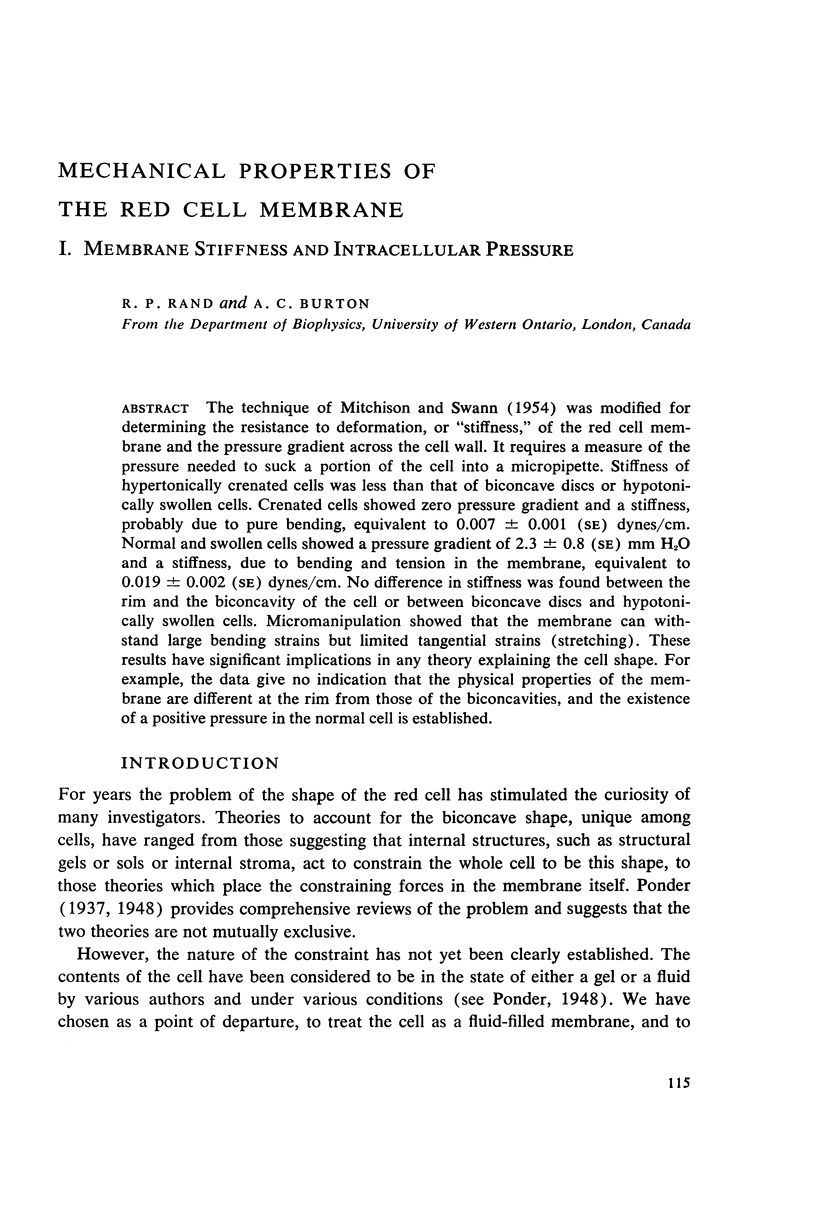
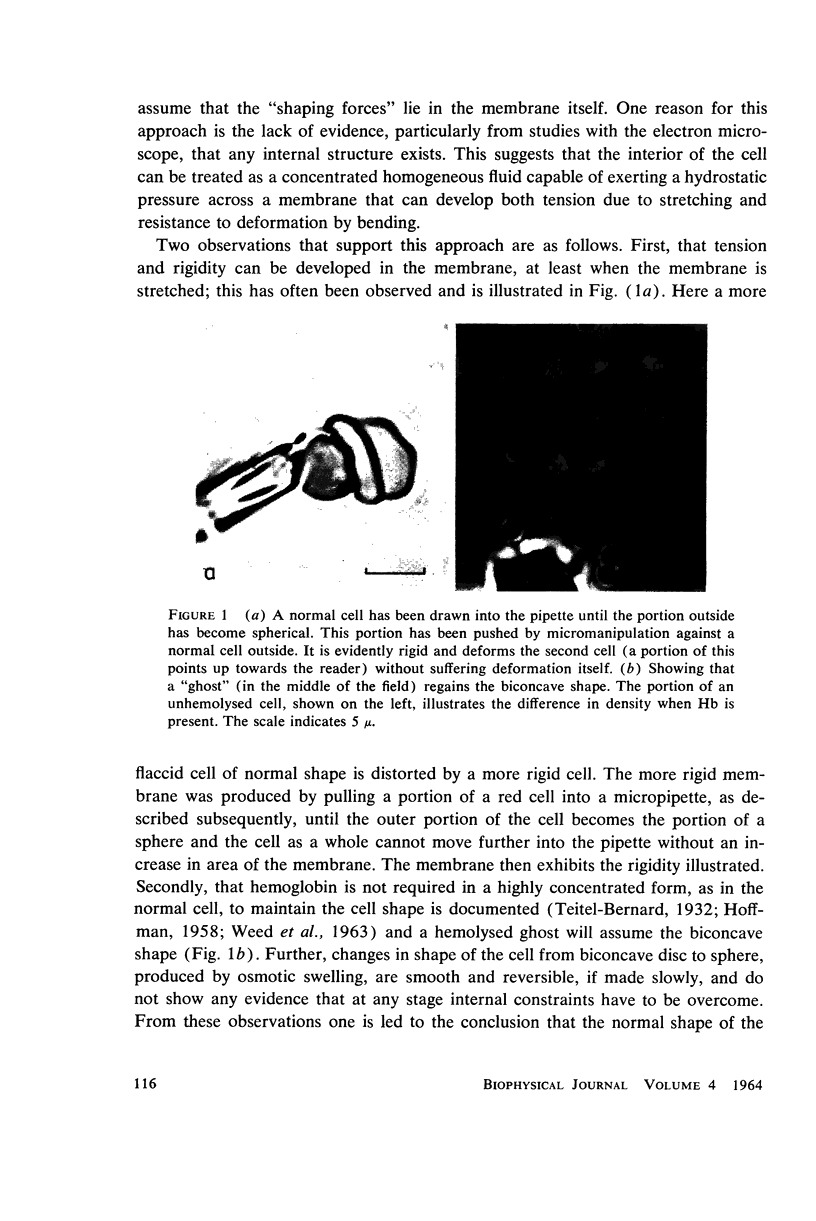

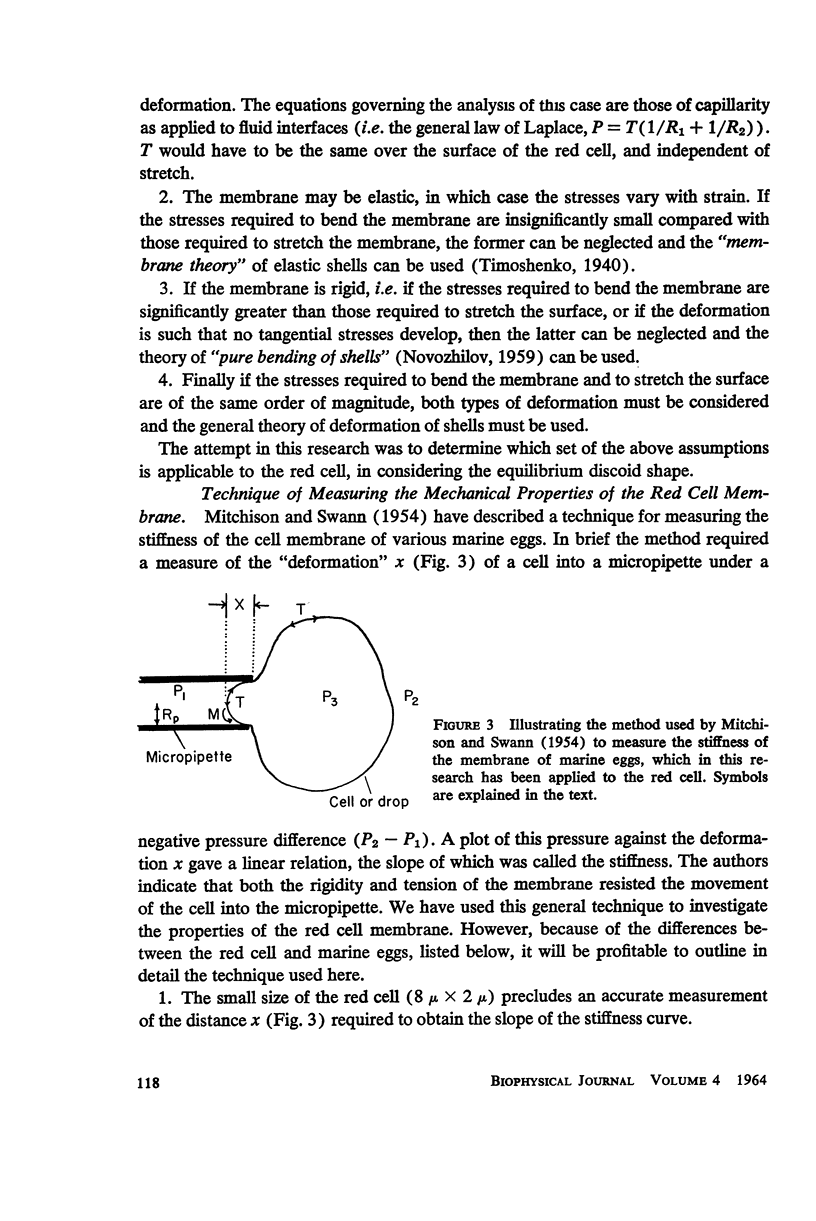
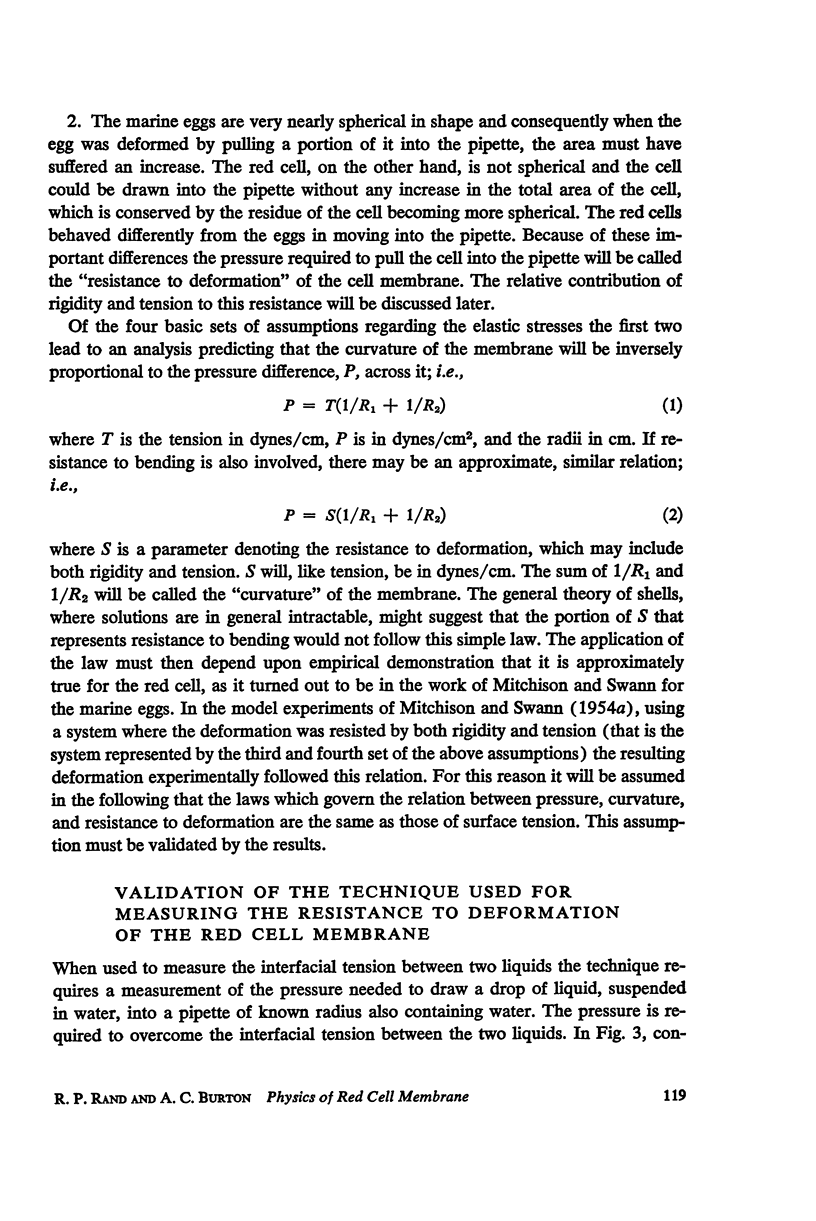


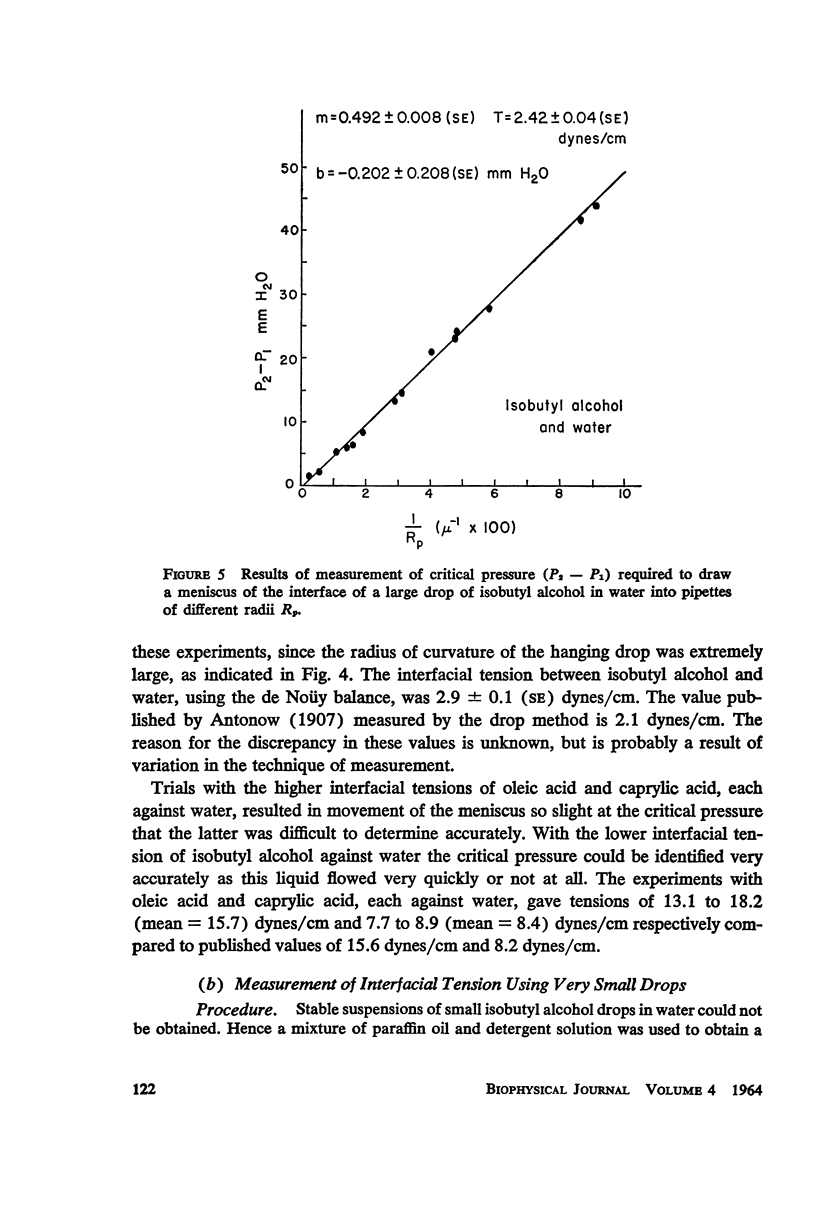




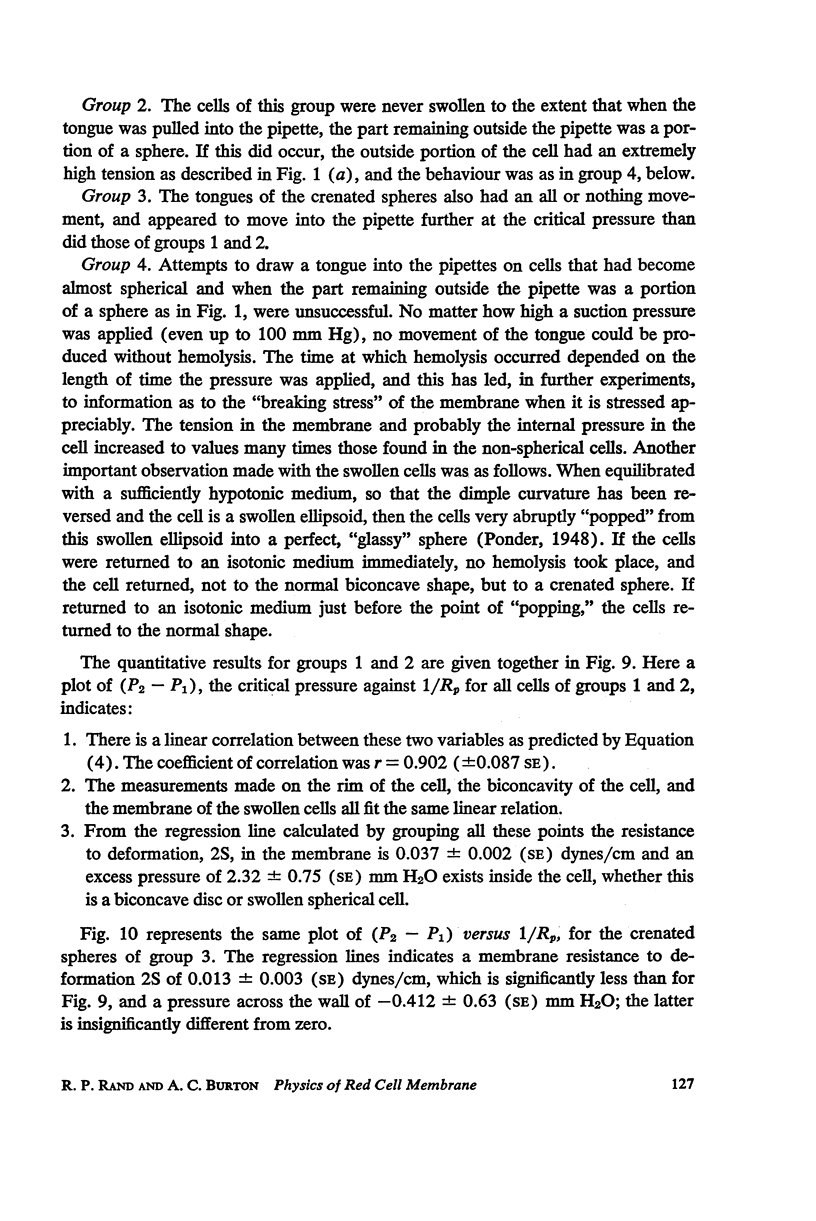








Images in this article
Selected References
These references are in PubMed. This may not be the complete list of references from this article.
- HOFFMAN J. F. Physiological characteristics of human red blood cell ghosts. J Gen Physiol. 1958 Sep 20;42(1):9–28. doi: 10.1085/jgp.42.1.9. [DOI] [PMC free article] [PubMed] [Google Scholar]
- PROTHERO J. W., BURTON A. C. The physics of blood flow in capillaries. III. The pressure required to deform erythrocytes in acid-citrate-dextrose. Biophys J. 1962 Mar;2:213–222. doi: 10.1016/s0006-3495(62)86850-7. [DOI] [PMC free article] [PubMed] [Google Scholar]
- RAND R. P., BURTON A. C. Area and volume changes in hemolysis of single erythrocytes. J Cell Comp Physiol. 1963 Jun;61:245–253. doi: 10.1002/jcp.1030610306. [DOI] [PubMed] [Google Scholar]
- TEORELL T. Excitability phenomena in artificial membranes. Biophys J. 1962 Mar;2:27–52. doi: 10.1016/s0006-3495(62)86947-1. [DOI] [PubMed] [Google Scholar]
- WEED R. I., REED C. F., BERG G. Is hemoglobin an essential structural component of human erythrocyte membranes? J Clin Invest. 1963 Apr;42:581–588. doi: 10.1172/JCI104747. [DOI] [PMC free article] [PubMed] [Google Scholar]






